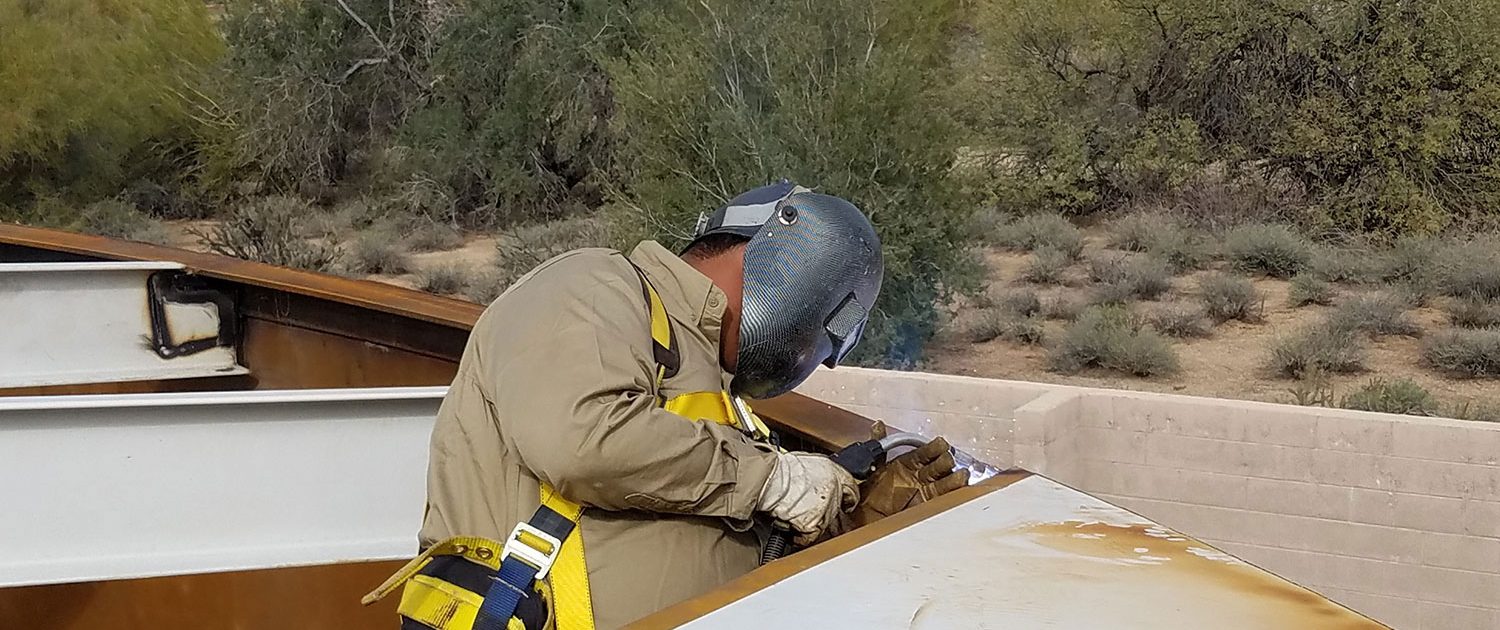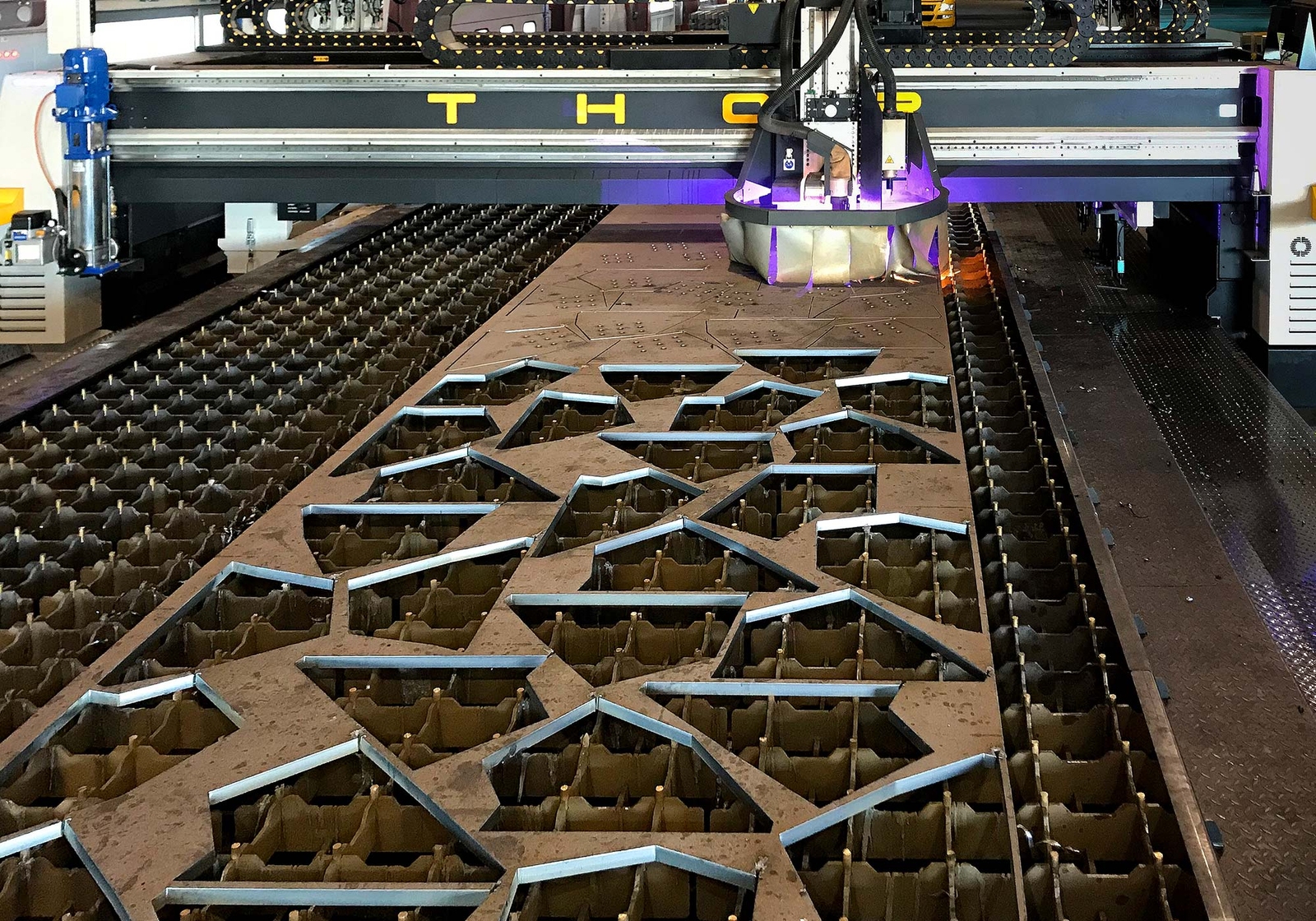Steel Fabrication Melbourne: Craftsmanship Fulfills Technology
Steel Fabrication Melbourne: Craftsmanship Fulfills Technology
Blog Article
Innovative Patterns in Steel Construction: Enhancing Durability and Accuracy
In the world of steel construction, the search of durability and precision has led to a wave of innovative trends that are reshaping the market. From improvements in welding modern technologies to the assimilation of robot automation in construction procedures, the landscape of steel manufacturing is developing swiftly. High-strength alloy development, combined with the use of 3D modeling and simulation software program, is pushing the limits of what is possible in regards to structural integrity and accuracy. Moreover, the growing focus on sustainable practices in steel production is not just driving efficiency but likewise promoting a much more environmentally mindful method to manufacture. These trends are not simply shaping the existing however likewise laying the groundwork for the future of steel manufacture, guaranteeing further enhancements in toughness and accuracy.
Advanced Welding Technologies
In the world of steel fabrication, the fostering of sophisticated welding technologies has considerably revolutionized the market's approach to attaining exceptional top quality and accuracy in structural welds. Advanced welding technologies, such as laser light beam welding and friction stir welding, have actually become game-changers in the area. Laser light beam welding employs a focused laser beam of light to join metal parts with amazing precision and speed, making it optimal for intricate styles and slim products. On the various other hand, friction stir welding develops extremely solid bonds by mechanically intermixing the particles of the products at the joint, getting rid of the need for thawing the metal. These innovations use various advantages, including minimized heat-affected areas, minimal distortion, and enhanced mechanical residential or commercial properties in the welded joints. By leveraging these advanced welding methods, steel fabricators can raise the resilience, toughness, and accuracy of their architectural welds, satisfying the increasingly demanding needs of modern-day building and construction jobs.
Robot Automation in Construction
Welcoming robot automation has actually ended up being a foundation of contemporary steel manufacture techniques, improving and simplifying procedures effectiveness across the industry. Robots are changing the way steel elements are manufactured, offering unmatched precision and speed while minimizing human mistake. These automated systems can manage recurring tasks with consistent precision, causing greater top quality output.
One key benefit of robotic automation in steel fabrication is the ability to work around the clock without fatigue, dramatically increasing production result. This continuous operation lessens downtime and accelerates task timelines, inevitably saving prices for suppliers. In addition, robots can be set to execute complex jobs that may be unsafe or challenging for human employees, enhancing safety and security in the workplace.
Moreover, robot automation makes it possible for smooth assimilation with various other digital technologies, such as computer-aided design (CAD) software application and Internet of Points (IoT) systems (steel fixing). This interconnected approach boosts interaction in between different stages of manufacture, optimizing workflows and ensuring real-time monitoring and control. As the steel fabrication market proceeds to evolve, robot automation sticks out as a transformative force driving performance and accuracy in producing procedures

High-Strength Alloy Development
The development of high-strength alloy advancement in steel fabrication is improving the industry's technique to improving material resilience and performance. High-strength alloys are engineered to exhibit exceptional mechanical residential or commercial properties, such as increased tensile toughness, strength, and corrosion resistance contrasted to traditional steel grades. By including these advanced alloys right into fabrication processes, suppliers can create parts that withstand greater stress and anxiety degrees and severe atmospheres, causing even more long lasting and trustworthy final result.
One secret benefit of high-strength alloy growth is the capability to reduce product density without compromising structural integrity. This not just leads to lighter-weight components however also adds to set you back savings and boosted efficiency in construction and setting up procedures. Additionally, the enhanced strength-to-weight ratio of these alloys allows for the design and building of structures with greater load-bearing capacities while decreasing overall weight.
3D Modeling and Simulation Software Program
Developments in steel fabrication procedures have been considerably propelled by the integration of sophisticated 3D modeling and simulation software program devices. These devices enable producers to create thorough digital designs of their tasks, enabling them to picture the final product with precision prior to any type of physical job begins.

Sustainable Practices in Steel Production
Integrating sustainable techniques into steel manufacturing procedures is essential for reducing environmental effect and making certain long-lasting source availability. One key sustainable practice is the adoption of energy-efficient technologies to lower greenhouse gas emissions during the steel production procedure. This consists of making use of renewable resource sources, such as solar or wind power, to power steel plants and carrying out energy-efficient tools to maximize energy usage.
An additional essential aspect of lasting steel production is the liable sourcing of basic materials. This involves making certain that the iron ore and various try this other sources used in steelmaking are acquired from honest and eco pleasant resources. By promoting openness in the supply chain and sticking to strict environmental requirements, steel suppliers can reduce the unfavorable impacts of resource extraction on regional ecosystems and areas.

Verdict
To conclude, the ingenious patterns in steel construction such as advanced welding technologies, robot automation, high-strength alloy advancement, 3D modeling and simulation software, and sustainable techniques are boosting the toughness and precision of steel items. These innovations are reinventing the steel fabrication industry by boosting top quality, performance, and sustainability. It is clear that the future of steel fabrication depends on accepting these cutting-edge innovations to satisfy the demands of modern-day link construction and production industries.
In the world of steel fabrication, the pursuit of resilience and accuracy has led to a wave of cutting-edge trends that are improving the sector.In the realm of steel manufacture, the adoption of sophisticated welding technologies has actually significantly reinvented the industry's strategy to achieving remarkable quality and precision in architectural welds. As the steel manufacture market continues to develop, robot automation stands out as a transformative pressure driving efficiency and precision in making processes.
Moreover, reusing and recycling steel scrap and waste products play a substantial role in enhancing the sustainability of steel production. metal fabrication melbourne.In conclusion, the ingenious patterns in steel manufacture such as innovative welding innovations, robot automation, high-strength alloy growth, 3D modeling and simulation software, and sustainable practices are enhancing the sturdiness and precision of steel items
Report this page